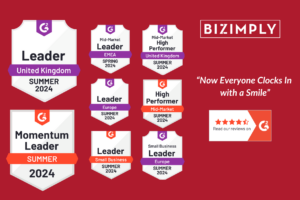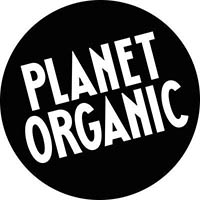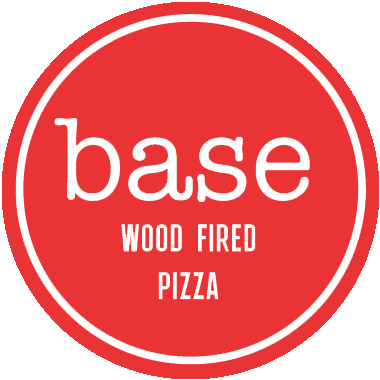We recently asked our customers to fill out a survey, asking about their experiences so far with the Covid 19 shutdown, the effect on their businesses, and their expectations for the future.
We gathered some interesting data which we’ll be using to build resources for the months ahead as part of our #BounceBackBetter initiative.
But first, here are the results!
The Sample
We received 145 responses from our customer base and those who follow us on social media.
Of these, 52.8% live in the Republic of Ireland, 42.4% in Great Britain, and the rest in Europe and the USA.

In terms of occupation, the biggest part of our sample are in-store managers (32.9%), business owners (28%) and in-store supervisors (15.5%). Other occupations were directors, HR staff, operations managers, other head office staff, and those involved in food and drink prep.
In terms of businesses, our largest response came from coffee business (33.1%), followed by restaurants (20.7%), bar/pub/nightclubs (14.6%) and fast food (7.6%) with smaller numbers making up the rest of the survey for retail, hotels, leisure and care facilities.
Half of our respondents are currently receiving furlough pay (50%) with 14.6% currently laid off. Of the remaining 35%, over half have received a pay cut.
Your Current and Future Operations
76.1% of respondent’s businesses were closed as of 14th May 2020. 14.8% had reduced their operations.
Restaurants are the most likely to be open or working with reduced operations, which suggests delivery and take-away options were introduced.
And looking at the 55.2% who had investigated other options for their business, delivery and takeaway are the most popular suggestions, with 25% and 37.5% of respondents investigating them. Coffee establishments obviously are in the best position to go with these options, and that is reflected in the results, with restaurants next in line.
Radically reducing numbers in-store is also a popular option, with 19% of those surveyed looking into this.
It is heartening to see nearly two-thirds of our respondents believe they will be reopening in June or July 2020, and 12% in May. There is no difference in whether they are located in the UK or Ireland. Coffee, restaurants and fast food places are the most optimistic about these opening times, while bars/pubs/nightclubs and hotels are leaning mostly towards an August 2020 opening, which is in line with the Irish reopening plan.
Of all surveyed, 61.4% stated that the shutdown has fundamentally changed their business.
The most interesting response to this is that coffee shops were split pretty evenly between Yes and No, which could indicates which shops may have operated mostly as takeaways, and which shops had more sit-in customers.
Three times as many restaurant workers said their business had changed over those it hadn’t. Twice as many bar/pub/nightclub workers said it had, rather than it having had no effect. We cannot deduce from this data, however, whether this is due to the potential to adapt these types of venues, or the inability of these venues to change.
Obviously we are still quite early in our understanding of how long we’ll be living with COVID 19, so it’s hard to know how these businesses will operate in 3 month’s time, and onwards.
Partnerships
A small number of our respondents (7.8%) had entered partnerships with other businesses in their locality. Examples of these were:
- Business to business selling of PPE.
- Setting up a Meals on Wheels initiative for those in need.
- Selling ready meals through other outlets.
- A bar group advertising together.
- Selling suppliers ingredients in an online store, and partnering with a bike shop, where the cyclists are making deliveries for them.
All really innovative and interesting examples of what can happen when you think outside the box! People who are innovating work in restaurants, hotels, retail and perhaps more surprisingly (or not, considering the decrease in their usual trade), the bar/pub/nightclub businesses.
Downtime Activities

If businesses are interacting with their customers at the moment, the majority (72.4%) are doing so through social media. This is unsurprising as it’s a cheap and effective way to get your message out there.
Furthermore, 24.4% of respondents are using the downtime to build up their social media channels.
Small numbers are using mailing lists and advertising to reach customers, but 10% of respondents hadn’t been in contact with their customers at all.
57% of those surveyed are using the downtime to learn something new, and 37% are trying to address problems within the business. A further 19% are introducing a new facet to the business, which makes sense when we look at the numbers implementing takeaway and deliveries.
Returning After Shutdown
Unsurprisingly, the biggest worries around returning after shutdown are related to costs and ability to make money. Almost 60% of respondents are worried there won’t be enough customers for their business, and 52% are worried about cashflow for costs like rent and wages. There are also concerns around the extra costs associated with new safety procedures.
Other big worries relate to health risks: to themselves, to their family members, and to their staff.
Lastly, 43% of those surveyed are worried about motivating staff to return to work, with one survey responder stating their staff are currently earning more while unemployed than they would working.
With regards to extra safety measures, 81% of our sample are or will be implementing safety and hygiene training for staff. 76% will have reduced numbers in store, 72% will have disposable PPE, and 70% will be implementing social distancing in queues.
Just over half will be taking card payments only; and a similar number will be spreading out tables and chairs in their business. One business is removing all their seating completely, and another is adding hand sanitising stations.
50% will also be adding perspex shields for staff at counters and tills.
Less than a third of those surveyed (31.6%) have a contingency plan in case there is another similar shutdown. Unsurprisingly, these businesses were, in the majority, restaurants and coffee related. This makes sense when compared to the data on who are changing business models, and the opportunities for adapting these businesses for change. In comparison, there aren’t many options for those with licensed premises or the hotel business.
Conclusions
While our survey had a small sample size, it gives us a nice snapshot of where a lot of hospitality businesses are at this moment in time. And it is just that: a snapshot of how things are operating in May 2020 in Ireland and the UK businesses mostly. In a few weeks time, the same survey might bring some very different answers due to the changing landscape of what we know about virus transmission, and the different government responses to control infection rates.
Half of our respondents are currently looking into alternative ways to operate their business, with deliveries and take-aways the most popular options. This is unsurprising given the businesses who responded were mostly involved in food and drink service. A very small percentage were looking into partnerships with other businesses in their community, which is a good way to diversify your business, build community relationships, and share customers with other businesses.
Over 60% of people said their business model has now fundamentally changed, indicating that operations which they’d initiated in a crisis have now become part of how they’ll operate in future. Depending on how living with COVID-19 progresses over the next months, and even years, it will be interesting to see how and if hospitality can ever return to how things were.
While the majority of businesses were using social media to interact with their customers, it was surprising to find many weren’t in contact at all. Now is a great time to build up your social media following, and establish your business as a part of your local community. We have some tips on how to do this HERE and would encourage you to view your business as important to your locality. There will be many people waiting for your reopening.
With all respondents looking to implement some kinds of extra safety measures, it’s clear that guidance is needed on what these should be, and how to execute them. We’ll be covering many of these over the in our blog series to help you re-open safely, and would encourage you to look for guidance from trusted sources going forward. Respondents talked about safety and hygiene training for staff, but who is creating this training? And is it up to date? For larger franchises these topics may be covered, but if you’re a small business be sure your sources of information are legitimate.
What is clear from the results is that the industry has been massively impacted by the virus, and through uncertainty everyone is trying their best to get their businesses open and profitable, without compromising the safety of their staff or community. How the next few months shake out in terms of business preparation, customer numbers, infection rates and government supports will be crucial in how well the industry can survive.
Want to see more of our findings? Get in touch by phone, email, or on social media!
Phone:
(UK) +44 203 642 5644
(IRE) +353 (1) 254 2524
Email: [email protected]
Help Centre: Click Here
Twitter DM: @Bizimply
LinkedIn: Bizimply













